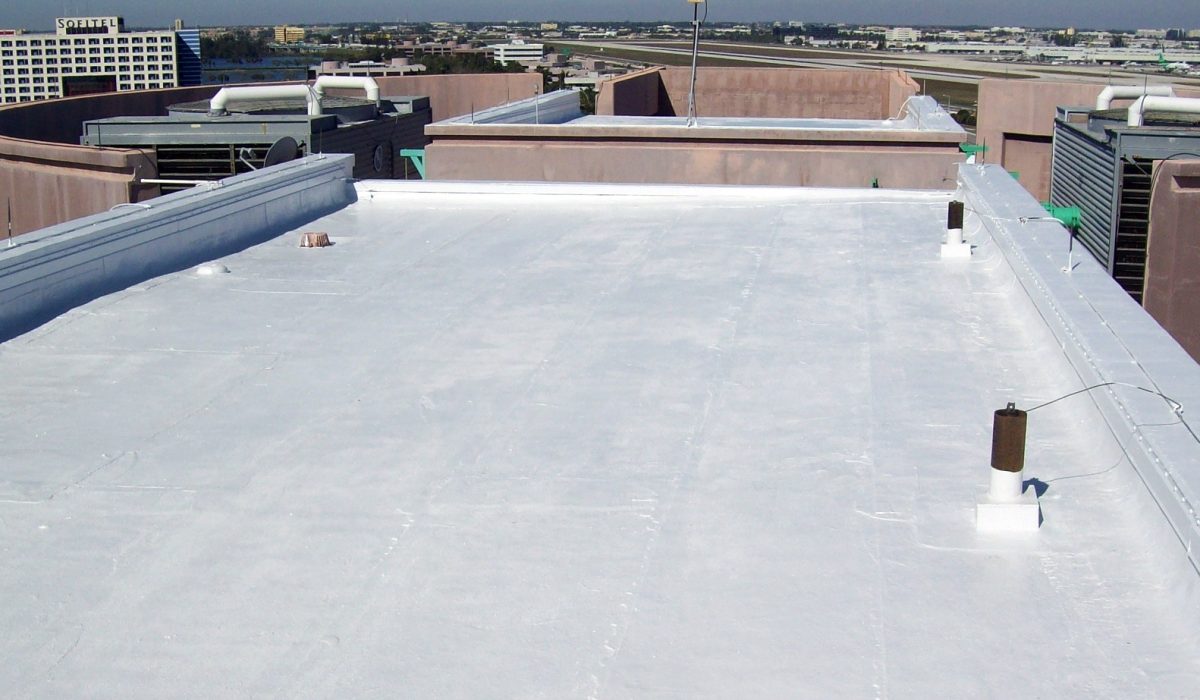Most of you are probably more familiar with seeing a flat roof on a commercial building, but they are found on residential buildings as well, most commonly apartment buildings and condos. And although they may appear to be the same type of roof, they actually are different and for very specific reasons. It is important to know these key differences if you are planning on doing any work on one of these roofs.
Flat roofs are built on what is known as low slope roofing system. Essentially there are three basic differences between a commercial flat roof and a residential flat roof. These differences fall under design, size, and roofing materials.
DESIGN
A commercial flat roof design is pretty much as it is described, flat, with maybe a few slight pitches to drain water. Generally the flat surface is to aid in routine building inspections and maintenance.
Residential flat roofs have a lot more freedom, as long as the house can carry the structural weight. Many home owners experiment with flat roof design under the recommendations of a professional when designing their home.
SIZE
Commercial roofs need to be functional, and therefore tend to have a wider space than residential roofs. Because they need to be highly functional, size matters more than looks. Even from above it’s hard to tell the difference between a commercial or industrial roof because they need to be able to follow the minimal structural requirements needed. No need to look extravagant in a lot of cases, just need to serve a purpose, and sometimes that purpose may include being able to carry the weight of equipment specially designed to assist the commercial or industrial purpose of the business within in.
Residential roofs have no size requirements and are entirely based upon the owner’s preference. There’s usually no need for it to be able to support any type of load for heavy equipment, it just needs to be proportional to the house.
ROOFING MATERIALS
When it comes to roofing materials, this is where you’ll find the most differences depending on requirements such as performance, qualities, and materials. Which will all of course affect the cost. Depending on the purpose of the roof for a commercial construction, there are a few roofing systems to choose from.
Built-Up Roofing (BUR)
Probably one of the most common roofing systems, it’s made up of tar and gravel which is stacked together. An affordable option which starts around $4 per square foot, it offers superior strength and can last around 20-25 years. And if installed correctly and properly maintained its lifespan can be extended for up to 40 years.
Metal
Metal is quite popular for commercial and residential roofs. It’s lightweight, easy to install and nowadays comes in a variety of colours. One downside, it can get expensive depending on the material you choose, such as aluminum or steel. But with a lifespan of up to 50 years and being highly fire-resistant, it’s definitely worth the investment.
Modified Bitumen Roofing
This system of roofing is made from fiberglass, asphalt, and other synthetic polyester materials. This type of roofing system is very popular because of its waterproofing and insulating capabilities. If your commercial building requires a lot of roof use, then this system is perfect because it can withstand tearing and heavy foot traffic. It’s an easily affordable option and can last an average of 20-30 years, which is impressive considering its durability.
EPDM
As one of the top choices for commercial roofing, cost starting at a staggering $0.80 per square foot, this is an effective waterproofing material. Chemically known as ethylene propylene diene monomer rubber, it possesses many traits that are characteristic of conventional elastomers, such as tear resistance, a high tensile strength, and a low compression set. It is also able to resist degradation resulting from weathering agents like UV rays and ozone. In addition to this, it is also very resistant to polar substances and steam. It may only have a limited colour selection, but considering you won’t need to stare at it all day long, that’s not such a downside considering all the pluses it has to offer.
Thermoplastic Membranes
Synthetic single-ply membranes, you can choose between PVC or TPO. PVC is a flexible membrane which strong and resists chemicals and other pollutants. TPO, on the other hand, is a synthetic material that has airtight-sealed corners to prevent moisture leakage and help promote great insulation. Both materials last between 20-30 years and are around $5-$6 per square foot.
Green Roofing
One of the most sustainable and modern roofing options because it is made up of vegetation and growing plants. It has become one of the fastest trends in big cities because of its ability to help moderate building temperatures and clean the air. It does require a bit more maintenance than other roofs, but if you plan on growing a garden while you’re at it, the benefits are worth it.
Essentially, when you’re going to decide on a type of roof for your building, you really need to consider not only the design of the building, but also the purpose of it. If you are going to have something more industrial inside, you may want to consider a more durable roofing system. However, if you’re commercial business is in the middle of a city, a greener option may actually benefit not only your business, but the entire neighbourhood.
If you’re ever unsure which option will best suit your building, always speak to a roofing professional.

